|
|
|
Sort Order |
|
|
|
Items / Page
|
|
|
|
|
|
|
| Srl | Item |
| 1 |
ID:
177817


|
|
|
|
|
| Summary/Abstract |
This paper is an assessment of cybersecurity principles within the nuclear arsenal of the United States, specifically the nuclear-armed intercontinental ballistic missile forces. Ongoing modernizations will introduce new components, and potentially new vulnerabilities, into U.S. nuclear forces. The principles for achieving secure operations from the fields of computer security, dependable computing, and systems analysis, and the extent to which they are addressed within the management of U.S. nuclear intercontinental ballistic missiles is discussed. This paper then considers the types of vulnerabilities that may be overlooked during modernizations, followed by a critique of U.S. nuclear command and control policy choices that could make the consequences of these vulnerabilities more catastrophic.
|
|
|
|
|
|
|
|
|
|
|
|
|
|
|
|
| 2 |
ID:
177822
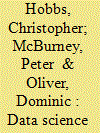

|
|
|
|
|
| Summary/Abstract |
Radiation detection technology is widely deployed to identify undeclared nuclear or radiological materials in transit. However, in certain environments the effective use of radiation detection systems is complicated by the presence of significant quantities of naturally occurring radioactive materials that trigger nuisance alarms which divert attention from valid investigations. The frequency of nuisance alarms sometimes results in the raising of alarming thresholds, reducing the likelihood that systems will detect the low levels of radioactivity produced by key threat materials such as shielded highly enriched uranium. This paper explores the potential of using data science techniques, such as dynamic time warping and agglomerative hierarchical clustering, to provide new insights into the cause of alarms within the maritime shipping environment. These methods are used to analyze the spatial radiation profiles generated by shipments of naturally occurring radioactive materials as they are passed through radiation portal monitors. Applied to a real-life dataset of alarming occupancies, the application of these techniques is shown to preferentially group and identify similar commodities. With further testing and development, the data-driven approach to alarm assessment presented in this paper could be used to characterize shipments of naturally occurring radioactive materials at the primary scanning stage, significantly reducing time spent resolving nuisance alarms.
|
|
|
|
|
|
|
|
|
|
|
|
|
|
|
|
| 3 |
ID:
177833
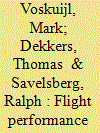

|
|
|
|
|
| Summary/Abstract |
In recent years, there has been a large increase in the use of uncrewed attack aircraft, or attack drones, in the Yemen conflict. At the same time, the flight endurance and payload capabilities of these uncrewed aerial vehicles seem to have increased significantly. This article presents a flight performance analysis of the Samad aircraft family operated by Ansar Allah, the Houthi rebel movement. The analysis is based on information available in the public domain and accounts for modeling uncertainties, and terrain under weather conditions typical for Yemen and Saudi Arabia. With only limited data available in the form of images, the analysis method assesses the flight performance of fixed-wing attack aircraft with high aspect ratio wings and powered by piston engines and propellers. Results demonstrate that it is highly unlikely that the Samad-2 version could reach strategic locations in Saudi Arabia when launched from Houthi-controlled territory. The analysis shows that Samad-3, however, can achieve a flight range in excess of 1800 km, bringing Riyadh and oil installations near the Persian Gulf into reach. The results of the study can be used to predict the locations from which the Samad UAV can be deployed in an attack. Furthermore, it gives insight into the increasing threat of this type of UAV when employed by non-state actors. The methods and tools developed in this study can be used to analyze the capabilities of other UAV with similar configurations.
|
|
|
|
|
|
|
|
|
|
|
|
|
|
|
|
| 4 |
ID:
177831
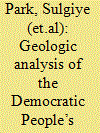

|
|
|
|
|
| Summary/Abstract |
The mining and milling of uranium ore is the first step in the production of fissile material and is a rate-limiting step for the indigenous production of nuclear weapons in the Democratic People’s Republic of Korea (DPRK). This study reports a geologic analysis of uranium mines in the DPRK in order to bound the state’s potential uranium production. The analysis suggests that the uranium deposits of the possible mines are of four types: (1) black shale (metamorphosed organic shale); (2) limestone; (3) granite/metasomatic; and (4) metamorphic deposits. Comparison with geologically-related, uranium-bearing host rocks in the Republic of Korea (ROK) indicate that DPRK uranium mines are associated with medium-to-high quantities of average low-grade ore (0.001–0.04 wt.% uranium). Using this low-grade ore, expansion of the state’s nuclear arsenal would require the extraction of larger quantities of uranium ore than has been previously assumed. The DPRK’s geology could, therefore, limit the future development of its nuclear weapons program.
|
|
|
|
|
|
|
|
|
|
|
|
|
|
|
|
| 5 |
ID:
177840
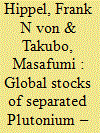

|
|
|
|
|
| Summary/Abstract |
With the end of the Cold War, Russia, the United States, France, and the United Kingdom declared an end to their production of plutonium for weapons and Russia and the United States declared large quantities excess to their future weapon requirements. The disposal of these excess stocks has stalled, however, and during the next two decades, the relatively small stocks of weapons plutonium in India, North Korea, Pakistan and possibly also China could increase significantly. Meanwhile, despite the failed commercialization of plutonium breeder reactors, the separation of civilian but weapon-usable plutonium from power-reactor fuel continues in France, India, Japan, Russia, and has begun in China. The global stock of separated civilian plutonium now exceeds that of weapons plutonium and could increase further during the next two decades.
|
|
|
|
|
|
|
|
|
|
|
|
|
|
|
|
| 6 |
ID:
177829


|
|
|
|
|
| Summary/Abstract |
This work reports on a notional compact naval reactor core running at 50 MWt full power—designed to investigate core life, reactivity margins and plutonium inventory for different levels of enrichment. A simplified computer model was constructed with the OpenMC neutron transport code and coupled to ONIX to calculate depletion of the initial fuel load—uranium dioxide mixed with gadolinia. It is shown that a notional low enriched uranium naval core could sustain criticality for 5–7 years at full-power and overcome xenon poison transients. Self-shielding of the burnable poison has been found to be significant in the radial direction and should be considered in such core design. Negative Doppler and moderator coefficients have been found for the low enriched cores. The plutonium inventory of the spent fuel produced at the end of life as a function of enrichment is also investigated. This study bears direct implications for the nonproliferation regime by suggesting that it may be possible to reduce the technical incentives for the use of highly enriched uranium on naval reactors.
|
|
|
|
|
|
|
|
|
|
|
|
|
|
|
|
| 7 |
ID:
177837


|
|
|
|
|
| Summary/Abstract |
The United States, Russia, and China are developing an array of hypersonic weapons—maneuverable vehicles that carry warheads through the atmosphere at more than five times the speed of sound. Proponents claim that these weapons outperform existing missiles in terms of delivery time and evasion of early warning systems. Here, we report computational modeling of hypersonic boost-glide missile flight which shows that these weapons travel intercontinental distances more slowly than comparable ballistic missiles flying depressed trajectories, and that they remain visible to existing space-based sensors for the majority of flight. Fundamental physical limitations imposed by low-altitude atmospheric flight render hypersonic missiles an evolutionary—not revolutionary—development relative to established ballistic missile technologies. Misperceptions of hypersonic weapon performance have arisen from social processes by which the organizations developing these weapons construct erroneous technical facts favoring continued investment. The modeling reported here provides a basis for rigorous, quantitative analysis of hypersonic weapon performance.
|
|
|
|
|
|
|
|
|
|
|
|
|
|
|
|
| 8 |
ID:
177825
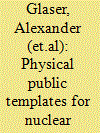

|
|
|
|
|
| Summary/Abstract |
Passive gamma spectroscopy has been successfully used for nuclear warhead inspection systems based on the template-matching approach. The most prominent example of such a system is Sandia’s Trusted Radiation Identification System (TRIS), which is based on an earlier system used at Pantex since 1994 to confirm the identities of containerized plutonium pits. Remarkably, TRIS uses only 16 energy bins, i.e., 16 numbers, to accomplish this task. Additional experiments have shown that such a template-matching method could be performed in a way that does not reveal classified information. To be used in a real inspection setting, however, inspectors must gain confidence that the system hardware and software work as designed and display genuine measurements through a process known as authentication. It also requires establishing and maintaining confidence in the template, i.e., that the data characterizing the treaty accountable item is genuine and has not been altered. In the case of TRIS, the template data are stored electronically and signed as a whole, such that no information about the template can ever be shared with inspectors as a confidence-building measure. Here, we propose an inspection protocol that uses a different approach: Information is stored in the form of punched cards that encode the secret template. Public masks can be used to reveal selected features of the template, e.g., total counts in particular energy bins, while keeping others secret, constraining certain physical properties of the treaty accountable item and providing increasing levels of transparency. We illustrate our approach using Princeton’s Information Barrier Experimental II based on a vintage 6502 processor.
|
|
|
|
|
|
|
|
|
|
|
|
|
|
|
|
|
|
|
|
|